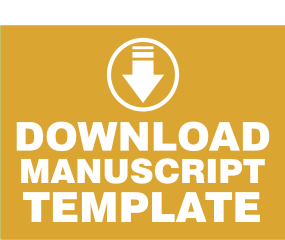Perilaku korupsi: Tinjauan psikologi, sosial, politik dan budaya
Keywords:
corrupt behavior, psychological approach, social approach, economic approach, cultural approachAbstract
Corruption behavior in Indonesia continues to increase from year to year in terms of the quantity or number of people committing corruption and the quality or nominal amount of corruption. Corruption has a severe impact on all aspects of people's lives. Therefore, research aimed at explaining corruption is needed. The purpose of this study is to provide an explanation of corruption behavior from various disciplines. This research is a literature review study. Research data were collected through search engines such as Google Scholar. Relevant articles were then analyzed using hermeneutics. The findings of this study indicate that many factors can cause corruption, so a multidisciplinary approach is needed. The implications of the research are discussed.
References
Blackburn, K. & Forgues-Puccio, G. F., 2009. Why is corruption less harmful in some countries than in others?. Journal of Economic Behavior & Organization, Volume 72, pp. 797-810.
Brueckner, Jan (1999) Fiscal decentralization in LDCs: the effects of local corruption and tax evasion. Dept of Economics, University of Illinois at Urbana-Champaign, Mimeo.
Glaeser, Edward, Jose Scheinkman, Andrei Schleifer (2003) The Injustice of Inequality, Journal of Monetary Economics N.50, p199–222. (Carnegie-Rochester Series on Public Policy).
Gray, Cheryl W. and Daniel Kaufmann (1998) Corruption and Development, in Finance and Development, March 1998, The International Monetary Fund, Washington D.C.
Indriati, E., 2012. Pola dan Akar Korupsi: Menghancurkan Lingkaran Setan Dosa Publik. PT Gramedia, Jakarta.
Jiang, G., 2017. Corruption Control in Post-Reform China. Springer Nature Singapore Pte Lt.d. Singapore. DOI 10.1007/978-981-10-4050-4_2.
Judge, W. Q., McNatt, D. B. & Xu, W., 2011. The antecedents and effects of national corruption: A meta-analysis. Journal of World Business, 01, Volume 46, pp. 93-103
Lambsdorff, J. G., 2006. Causes and consequences of corruption: What do we know from a crosssection of countries?. In: S. Rose-Ackerman, ed. International Handbook on the Economics of Corruption. Northampton, Massachusetts: Edward Elgar Publishing, Inc., pp. 3-51.
Stapenhurst, R., Johnston, N. & Pelizzo, R., 2006. The role of parliament in curbing corruption. Washington D.C.: World Bank Institute.
Tanzi, Vito (1995) Corruption, Arm’s length relationship, and markets, in The Economics of Organized Crimes, edited by Gianluca Fiorentini and Sam Peltzman, Cambridge: Cambridge University Press, pp 161–180.
Transparancy International, 2019. Corruption Perception Indexs. https://knoema.com/ atlas/maps/Corruption-perceptions-index
UNODC, 2011. UNODC estimates that criminals may have laundered US$ 1.6 trillion in 2009.
Wade, Robert (1997) How infrastructure agencies motivate staff: canal irrigation in India and the Republic of Korea, in Infrastructure Strategies in East Asia. Ashoka Mody (ed.) World Bank.
You, Jong-sung and Sanjeev Khagram (2005) A Comparative Study of Inequality and Corruption, American Sociological Review, 2005, VOL. 70 (February:136–157).
Downloads
Published
How to Cite
Issue
Section
License

This work is licensed under a Creative Commons Attribution-ShareAlike 4.0 International License.





